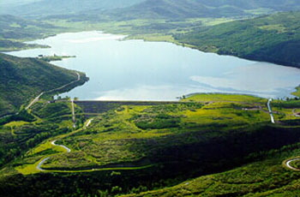A wire story printed by dozens of newspapers last month called attention to a national safety problem, the age and condition of dams. Its headline said “At least 1,680 dams across the U.S. pose potential risk.” That is my candidate for understatement of the decade.
There are 91,468 dams in the U.S., including 1,803 in Colorado. All of them are potentially dangerous, though almost all are necessary parts of America’s vital infrastructure, every bit as important to our lives as highways, airports, pipes, and power lines. But unlike roads, most Americans do not see dams and reservoirs every day, so they don’t give much thought to the importance of dams. They should.Dams serve a variety of purposes, especially flood control, irrigation, domestic water supply, power generation, and recreation. On average, they are over 50 years old, and many have seen almost no maintenance since their original construction. Several are just plain dangerous.
In another almost shocking understatement, a specialist at the Association of State Dam Safety Officials was quoted saying, “There are thousands of people in this country that are living downstream from dams that are probably considered deficient…” In fact, there are tens of millions of people, in major cities of almost every state, living downstream from dams and reservoirs. That includes Boston, Atlanta, Houston, Portland, Sacramento, Des Moines, Nashville, Denver, Pueblo, Delta, Montrose, and scores of others. Many people live below dams unknowingly, according to the report, so the results of dam failures can be tragic when there is no warning, or when warnings are ignored.
Most famous was the 1889 collapse of the dam at Johnstown, Pennsylvania that buried the town and killed over 2,000 people. More recently, the 1976 failure of the brand-new Teton Dam dumped 80 billion gallons of water down the Snake River, flooded Wilford, Sugar City, Rexburg and part of Idaho Falls, and killed 14 people. The attention it attracted – in the middle of a presidential campaign season – set off a growing chorus of opposition to dams, and prompted Jimmy Carter to promise, if elected, to end large water projects. He was, and his water project “hit list” changed the politics of dams, viewed ever since as taxpayer-funded boondoggles that cost a fortune to build, and damage the environment.
Environmental impact is always debatable, but it is beyond dispute that the West would not be inhabited like it is today without the reservoirs, tunnels and pipelines that bring water to its cities. Without “water projects” there could not be 5.7 million people in Colorado or 7.2 million in Arizona. There most certainly would not be over 39 million people in California without the Colorado River Aqueduct and a dozen other major water supply projects.
Reservoirs and water storage have been so vilified by the environmental lobby that they are not generally considered an option in addressing future water needs. In 1993, when Bruce Babbitt said he wanted to be the first Interior Secretary “to tear down a really big dam,” he was criticized by very few western leaders. Instead, he popularized the perception of dams as ecological criminals, making future water storage projects much more difficult.
Unfortunately, public skepticism about the utility of dams has also diminished expenditures on safety inspection, maintenance, and especially improvements. One report shows almost 1,000 dam failures since the Teton disaster, often with little public support for replacing them. That anti-dam mindset is badly off-base. There is a dire need for more funding, not only for inspection and maintenance, but for better dams with more modern engineering.
Nationwide, it is estimated that the cost of repairing and modernizing unsafe dams could approach $70 billion. But unlike highways, most dams are privately owned, so government funding is problematic. A 1982 Corps of Engineers assessment said most owners were unwilling to fund needed repairs, so almost every state created a dam safety program. Colorado has 429 dams rated as “high hazard potential,” meaning dam failure would cause loss of life and significant property destruction. Nearly all those have emergency action plans in place. The State budgets about $2 million annually for the program (which is comparable to the commitment of most other states). That’s less than the cost of modernizing any one of those dams – never mind the cost of adding badly needed additional storage for a growing population.
For a society allowing its infrastructure to age and deteriorate without decisive action, water shortages are a choice. Investing in major dam improvements would be a far better choice.
An edited version of this column appeared in the Grand Junction Daily Sentinel January 10, 2020.





Comments on this entry are closed.